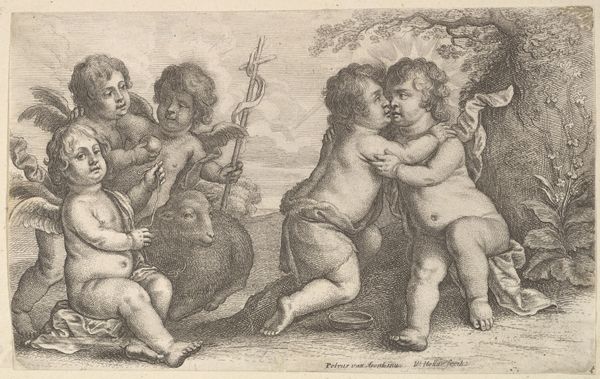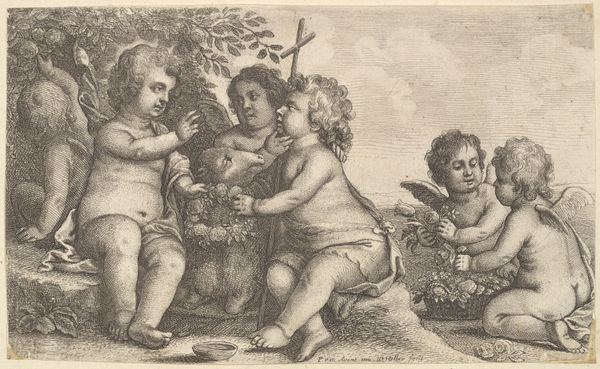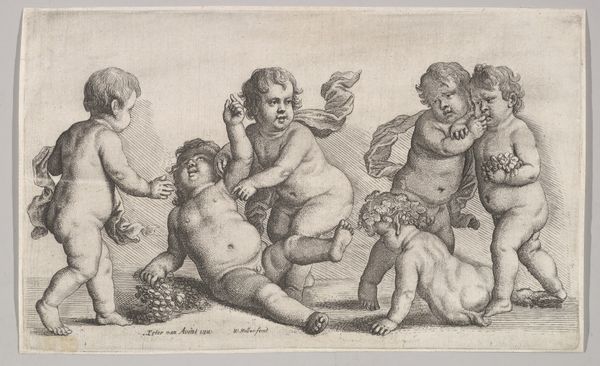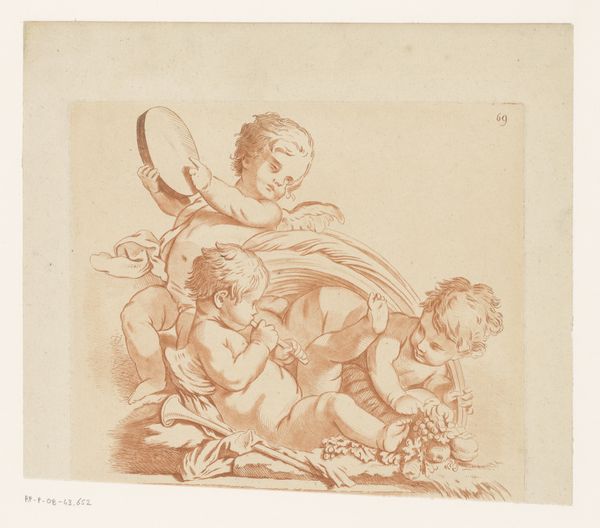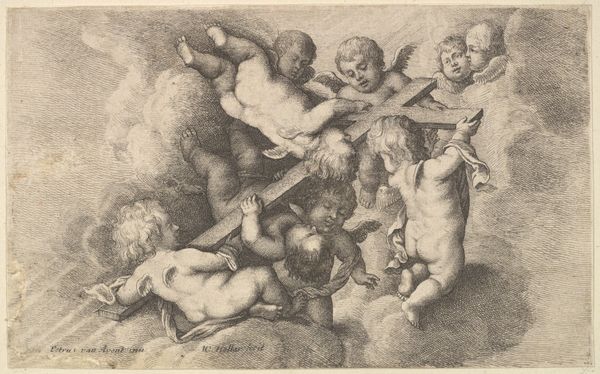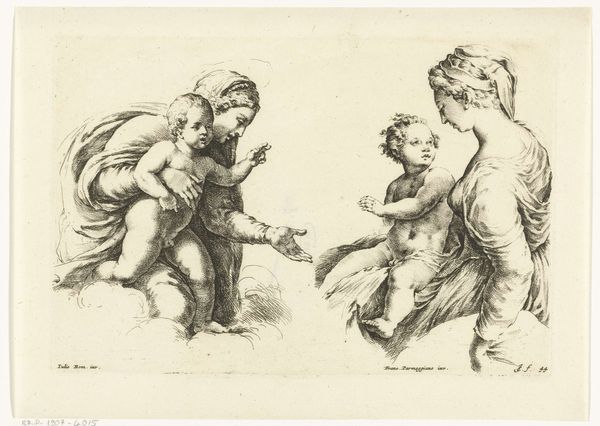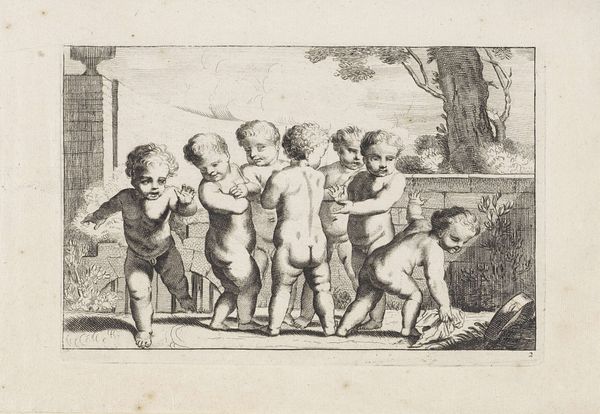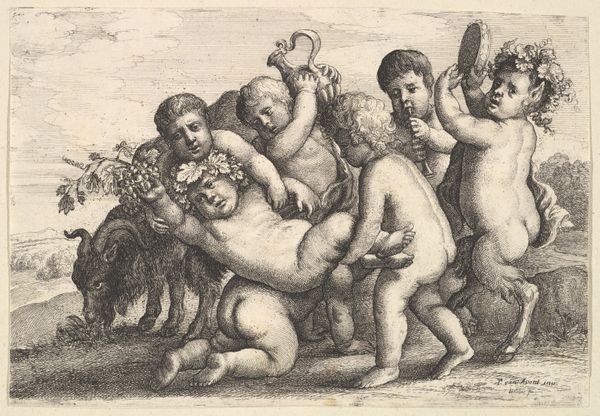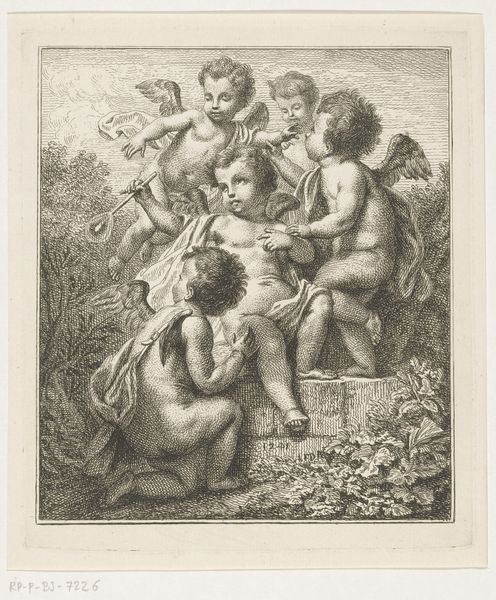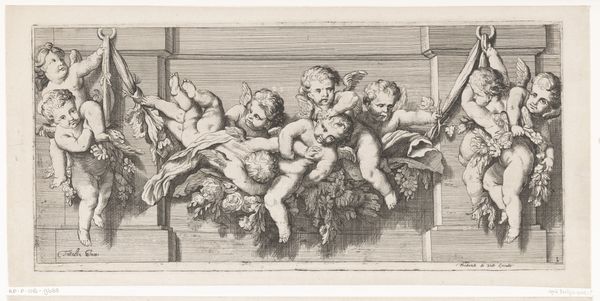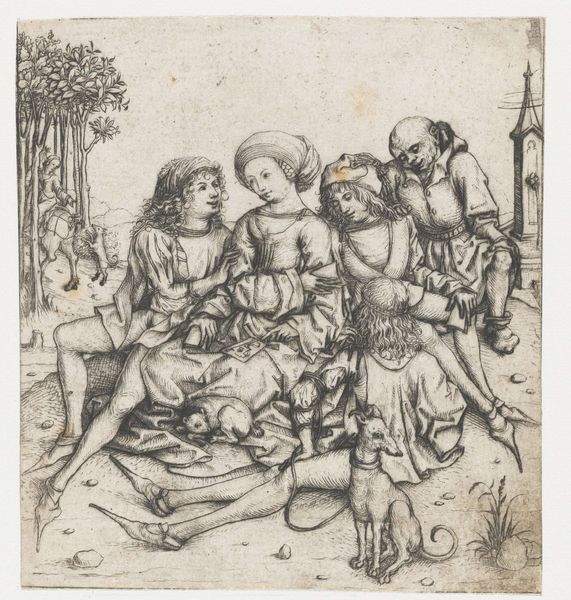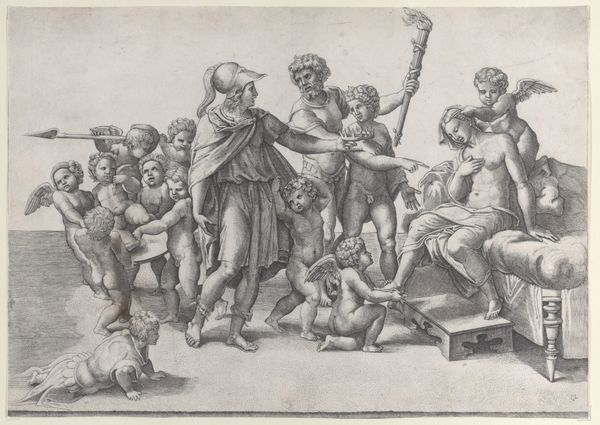
drawing, print, engraving
#
drawing
#
allegory
#
baroque
# print
#
figuration
#
line
#
genre-painting
#
history-painting
#
academic-art
#
engraving
Dimensions: Plate: 5 × 8 1/8 in. (12.7 × 20.6 cm)
Copyright: Public Domain
Curator: This engraving is titled "Concert of Cherubs on Earth", made in 1646 by Wenceslaus Hollar. The scene depicts a group of cherubic figures playing musical instruments, rendered with fine, delicate lines. Editor: The first thing that strikes me is the joyful exuberance! It's such an energetic, almost chaotic composition. There are cherubs playing, conducting, and even struggling with their instruments. It’s wonderfully human despite being a heavenly subject. Curator: Hollar was known for his detailed renderings of architecture and landscapes, and though this print isn't either of those, we can certainly see his skill in capturing detail through the careful lines that create depth and texture in the cherubs' wings and the musical instruments. It's also important to note that prints such as this one played an important role in circulating visual ideas at the time. Editor: Absolutely. Prints made art accessible to a much wider audience. Thinking about the social context, images of cherubs often symbolized innocence, purity, and divine love, aligning with religious and cultural ideals of the era. But here, the earthly setting suggests something else... Curator: You're right. These cherubs are presented in a very worldly, almost domestic context. They're not floating on clouds. They are grounded, as if this heavenly music-making is an everyday event happening somewhere in our midst. That juxtaposition adds a layer of narrative complexity, don’t you think? Editor: It does. The image seems to propose a more accessible divinity, or perhaps suggests how earthly joys can become sacred experiences. I can't help but wonder, looking at these musical cherubs from a contemporary lens, are there accessibility issues, for example? Who gets to play what instruments, and are they given the opportunity? The questions about the nature of art haven't changed, even if the subject is timeless. Curator: A thought-provoking angle to consider. Hollar’s print allows us to contemplate the interplay between the divine and the everyday and explore the socio-political dimensions of art. Thank you for that perspective. Editor: It’s been a pleasure. Thinking about the artwork as not static—something to consider beyond its original intent and circumstances, can shift it from something historical into a contemporary discussion piece.
Comments
No comments
Be the first to comment and join the conversation on the ultimate creative platform.
